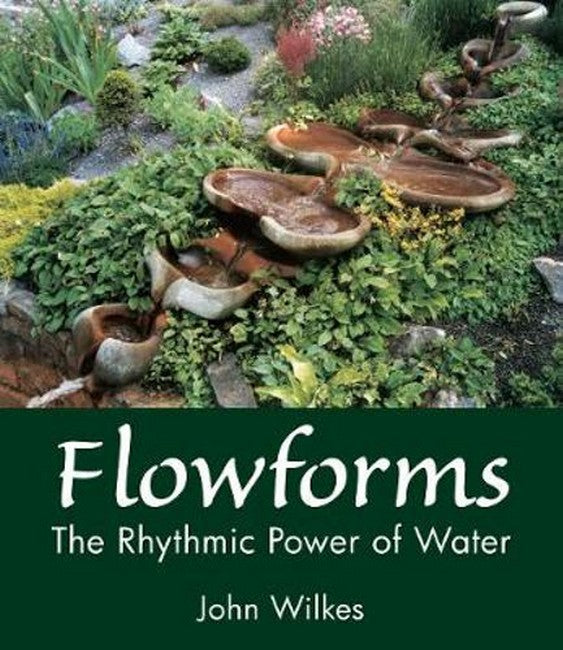John Wilkes, who died in 2011, studied sculpture at the Royal College of Art. While in London he met George Adam and Theodor Schwenk, a pioneer in water research and author of Sensitive Chaos. Wilkes joined the Institute for Flow Sciences in Herrischried, Germany and began his investigations into the flow and rhythm of water which would eventually result in the Flowform. During this period, he also worked at the Goetheanum in Switzerland where he researched and restored Rudolf Steiners sculptural and architectural models. In 1971 he joined Emerson College in Forest Row, Sussex, and is now Director of the Virbela Rhythm Research Institute.
Description
Part 1: Rhythm and polarity
1. Water and rhythm
2. Rhythm and flow: the water cycle
3. Metamorphosis
Part 2: Discovering the Flowform
4. Experimenting with water
5. Discovery of the Flowform Method
6. The Flowform and the Living World
Part 3: Applications and Research
7. Jarna: the first major Flowform project
8. The next generation of Flowforms
9. The Metamorphic Sequence
10. Research with Cascades
11. Flowform related developments
12. The Flowform throughout the World
13. Present and Future
Appendix 1: Metamorphosis
Appendix 2: Flowform types, designs and applications
Appendix 3: Scientific and technical aspects
Appendix 4: Virbela Rhythm Research Institute
With extraordinary depth of vision, Wilkes shares more than thirty years of accumulated ideas, experiments, experiences and creative, innovative designs with water. Benefits from many photographs and illustrations. -- Maggie Lee, Resurgence, May 2004
John Wilkes patented his first Flowform water sculpture over 30 years ago. This is the story of his studies into the nature and behaviour of water and the pioneering development of the special water sculptures. Detailed accounts of research are richly illustrated, including many beautiful images of the swirling patterns. The book is full of both scientific observations and a celebration of the beauty and wonder of water, and the beauty and wonder of the sculptures it has inspired John Wilkes and his team to create. -- Kathleen Askew, Permaculture, March 2004
One of the aims of the book is to raise our consciousness about water and get us to reassess our attitude to it and in this it most definitely succeeds. With the aid of copious photographs, drawings and diagrams, our attention is drawn to how much life there is in water. I found this an extremely interesting, informative and attractive book. -- Rosemary Usselman, New View, December 2003
Contains many beautiful illustrations of water-in-motion from rivers and waterfalls, to the art of designing water features for a garden. -- Pentacle, Spring 2004

